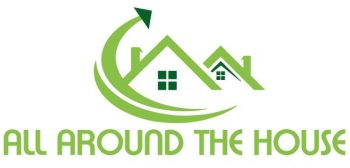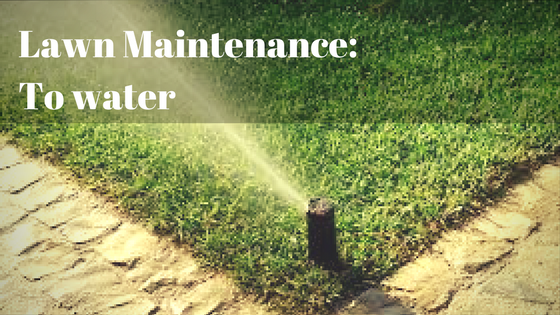Lawn Maintenance: To water
Plants need nourishment and energy to grow. They get their energy for growth from the sun, so always ensure you provide them with the optimal level of sunlight. To provide nourishment to the plants, you need to provide your plants with good soil and water. The water needs to be able to work into the soil to aid in the disbursement of the nutrients to the plants roots. this is only done if the water is properly held in the soil.
Create water retentive soils
An airy soil where organic matter is incorporated which retains water better. So you have to give less frequent watering. Cover the bottom with a layer of compost , which works to conserve water, and goes against weeds.
To learn more about quality soil, check out our Complete Guide to Soil
Rainwater provides free water
Use rainwater for your indoor and outdoor plants. Which naturally contains almost no dissolved solids. In rainwater is therefore much room for nutrients. Rainwater and fertilizer is an ideal combination for indoor and outdoor.
Advantages of rainwater
- It is soft, does not contain calcium and is therefore good for your plants.
- Rich in minerals.
- Always in the right outside, so you do not scare plants.
- Environment-friendly
- Inexpensive, actually free besides the materials to collect it/
Collect rainwater with a rain barrel
Annually, Americans use approx 2200 gallons of water in their lawns and gardens. This water goes through processing plants, and is loaded with chemicals, and each gallon used costs the homeowner money. Using a rain barrel collection system will capture rain that falls upon your house, and allow you to use it for free.
All about installing a rain barrel
Installing a rain barrel is easy!
Steps to installing a rain barrel:
- Build a strong platform, such as using bricks or pavers. A platform allows the weight of the rain barrel to be distributed even across the ground and keeps it from sinking into the ground.
- Attach a water diverter to your downspout, so it can divert the water from the downspout into your rain barrel. Make sure your diverter includes an overflow valve, so it stops putting water into your rain barrel when it is full.
That is it, nothing else is needed to install a rain barrel.

When to water?
When you water depends on the season and the humidity of the ground. Enter in the summer early in the morning or evening water. More preferably not in the afternoon because the difference in temperature is then too large. Too much water evaporates in the heat of the day without the plants there have something. Never give water in the bright sun, then burn the plants.
Learn more about water consumption in this post
Not too often and not too much
It is best to water on a schedule, only once a day, then to water multiple times per day. A good long watering of your lawn, allows the water to penetrate deeper into the ground, which in turn causes the roots to grow deep into the ground. Watering for short periods causes the roots to grow shallow and wide, allowing them to be more suseptable to disease.
So it is important to give more water!
When to give your plants more water:
- During the growth period in the summer.
- When exposed to full sun.
- In hot months.
- By prolonged drought and heat, even twice a day.
- When plants are in pots. The pots also evaporate water itself.
When to give your plants less water:
- At the beginning of the growth period in spring.
- That stand in the shade in a sheltered spot.
- When cool, rainy weather.
- When container plants that winter cold and frost.
How to deliver water to your yard?
There are several ways to deliver water to your lawn and plants, they include:
- Watering Can
- Manual Hose Spraying
- Microdrip system
- Lawn Sprinkler
Examine the pros and cons of each method below.
Watering can
A watering can is simply that, a can with a spout that holds water. They can be made from metal or plastic, and the spouts can deliver water in either a simulated rain mist or in a deluge style.
- Pros: Allows the plant to be watered at regular intervals, while paying attention to it’s individual needs. Ideal for container plants.
- Cons: Too difficult to water large areas, such as a lawn, or large trees.
Manual Hose Spraying
A garden hose with a spray gun style attachment for manually spraying water over an area. Everyone with a garden hose has this attachment, whether they use it for watering their lawn or for washing their car, they have it.
- Pros: Can be utilized over a large area, unlike a watering can. Able to apply water in zones where it is needed most, such as areas with more sun, while avoiding areas that are shaded so as to not drown them.
- Cons: Must be done manually, so it involves a lot of time to dedicate just to watering the lawn.Often requires substantial water pressure, so use of a rain barrel won’t be possible.
Microdrip
Microdrip is a user-friendly system that allows you to provide water to your landscape plants and gardening beds. People often call this system a soaker system or hose. They can be made of hoses that contain small holes or a fully permeable hose that just leaks water out.
- Pros: Delivers water evenly and slowly, which allows the water to penetrate the ground deep, to better facilitate deep root growth. An ideal system to deliver water from a rain barrel system.
- Cons: Can not be used in a lawn, only able to be used along landscapes and borders.
Sprinkler System
A sprinkler system can be used 2 different ways, by a hose attachment or through a built in system installed underground.
- Pros: Delivers water evenly across the lawn, whether as a hose attachment or with a pop-up system. An automatic pop-up system can be set with a timer, so it requires no investment of time once installed. A hose attached system requires just the time needed to move them into the lawn, and potentially around the lawn to get proper coverage.
- Cons: Not able to be used with a rain barrel system. Use of an automatic pop-up sprinkler is not ideal for a small yard, as the coverage area is quite large. A hose attachment system is good for a small yard, but can’t be directed away from areas that require less water.
Water taps for sprinkler use, allow multiple connections without pressure loss.



Comments are closed, but trackbacks and pingbacks are open.